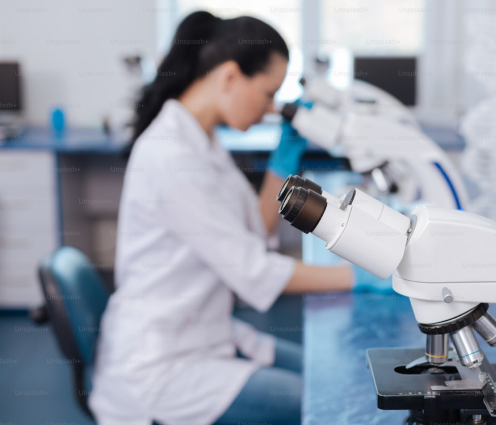

Synthetic biology is becoming less and less confined to the realm of imagination. Across the world, scientists are designing, building, and programming living systems that can heal, sense, and even regenerate. In the field of tissue engineering and organoid science, researchers are not only studying biology – they are recreating it.
Yet as the technology matures, a new challenge is emerging. The question is not just what we can grow, but who can grow it. Behind every scientific advance lies a workforce with a rare blend of skills, curiosity, and vision. For the organisations leading this revolution, success will depend as much on their ability to recruit the right people as on their ability to design the right models.
Synthetic Biology Meets Human Ingenuity
Synthetic biology and tissue engineering sit at the intersection of biology, chemistry, physics, and engineering. These disciplines aim to understand life well enough to build it – from biomaterials that guide cell growth to organoids that mimic human organs in miniature.
The potential applications are extraordinary. Scientists are developing 3D tissues that can replace damaged organs, micro-human models that replicate disease, and living systems that could one day produce sustainable materials or medicines. In this world, biology becomes both the tool and the technology.
But such innovation cannot happen in isolation. It requires people who can think across boundaries, translate between disciplines, and collaborate within highly specialised teams. In other words, the future of synthetic biology depends on human synthesis – bringing together diverse minds to build living systems.
A New Type of Talent Landscape
As this field grows, so too does the complexity of its talent needs. Traditional life sciences roles are evolving. A cell biologist might now work alongside a mechanical engineer to optimise a bioreactor, while a computer scientist may apply machine learning to predict how tissues will behave.
This convergence is creating demand for hybrid talent - professionals who are comfortable operating at the interface between disciplines. They must not only possess deep scientific knowledge but also the agility to apply it in unfamiliar contexts.
At HRS, we are seeing a rise in demand for:
· Bioengineers and biomaterial scientists developing synthetic scaffolds that support tissue formation.
· Organoid specialists and stem cell biologists creating patient-derived models for research and drug testing.
· Microfluidics and chip engineers designing systems that replicate human physiology.
· Computational biologists and data scientists interpreting the vast datasets produced by 3D biology.
· Project leaders and translational scientists capable of bridging the gap between the research bench and commercial strategy.
This diversity of expertise is redefining how organisations build teams. The most successful are those that recognise talent not just by technical specialism, but by mindset – curiosity, adaptability, and a willingness to collaborate across boundaries.
Leadership in the Age of Living Systems
The leadership challenge in synthetic biology is equally complex. As companies move from proof-of-concept research to scalable commercialisation, leaders must guide teams through rapid evolution. They are building new business models, navigating regulatory uncertainty, and ensuring ethical governance in an area where the science itself raises profound questions.
Effective leaders in this space share certain qualities. They think strategically but stay grounded in science. They balance creativity with caution, ensuring that innovation remains responsible. And perhaps most importantly, they inspire their teams with a sense of purpose – the understanding that growing living tissues is not only a scientific achievement, but a contribution to human health and sustainability.
At HRS, we often describe this as purpose-driven leadership. It is what attracts top talent to emerging sectors: the chance to be part of something transformative, with both social and scientific value.
Building Bridges Between Academia and Industry
Another defining feature of this field is its deep connection to academic research. Many of today’s most innovative start-ups in tissue engineering were born from university spinouts or collaborations with research institutions.
Recruitment, therefore, must also bridge the academic-industrial divide. Early-stage companies often seek individuals who can translate discovery into development – people who understand both the rigour of research and the realities of bringing a product to market.
The transition from academia to industry can be challenging. It requires a shift in pace, focus, and communication style. A strong recruitment partner can play a vital role in this process, helping candidates navigate the change while supporting employers to identify potential beyond traditional CVs.
At HRS, we see this as part of our mission: connecting the ecosystems that drive life sciences forward and ensuring that promising ideas are matched with the people who can bring them to life.
Culture, Ethics, and the Future Workforce
As the field of synthetic biology grows, so does the importance of culture and ethics. These technologies touch on fundamental questions about life, responsibility, and the limits of human intervention. Organisations must therefore build cultures that are not only innovative, but also transparent and reflective.
Diversity and inclusion are equally critical. The future of living systems will benefit from a diversity of thought, background, and perspective. Teams that reflect a range of experiences are better equipped to foresee unintended consequences and to design solutions that serve wider communities.
For employers, this means recruiting not only for skill, but for shared values. The laboratories that grow living tissues must also nurture living cultures – collaborative, ethical, and forward-looking environments where science can thrive.
People Before Possibility
Synthetic biology is rewriting the rules of what is possible in the life sciences. Yet we cannot disregard that behind every breakthrough is a skilled person - a scientist, an engineer, a data analyst, or a leader – whose creativity makes that progress real.
In an industry defined by complexity, it is people who bring clarity. In a field driven by technology, it is human insight that gives direction.
As we move further into the age of living systems, success will belong to those organisations that recognise one simple truth: science grows where people thrive.
At HRS, we are proud to continue to help build the teams that make that growth possible, and support the candidates and clients changing the future of the world.


Looking for a New Role – or Searching for Top Talent? Let’s Talk
Whether you're exploring your next career move or looking to hire skilled professionals, HRS is here to help.
We connect ambitious individuals with exciting opportunities across science, technology, and innovation-led sectors. From early careers to executive search, our expert recruiters work closely with both candidates and employers to ensure the perfect match.
If you're hiring, we’ll help you find the right people. If you’re job hunting, we’ll help you take the next step. Browse our latest jobs or get in touch to find out how we can support you.

